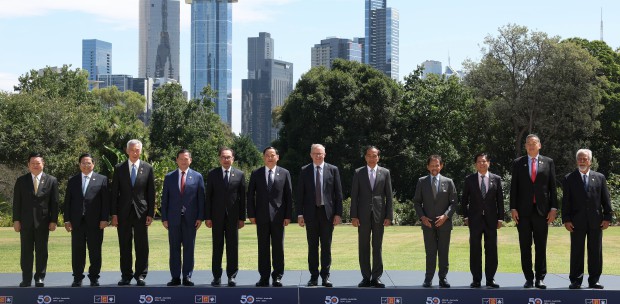THERE have been many dialogues about youth issues at the Asean level.
The problem is the quality, nature and typology of these initiatives.
If I could summarise the situation and propose ways forward, I would say: "Enough dialogues and leadership gatherings. Bring in real engagement and participation."
We need to shift from dialogue to participation, and from deliberation to decision making.
As explained by Mohammad Zulhafiy Zol Bahari in an op-ed ("Asean youths should better understand pressing issues facing the world" — NST, Aug 15), the 1st Asean Youth Dialogue was held recently, but was it the first such event?
Actually, there have been many initiatives similar to this dialogue.
For example, during Brunei's "pandemic" chairmanship of the bloc, similar dialogues were also organised.
All these efforts ended up with cosmetic results and no follow-up.
What is needed is real participation and real, meaningful, outcome-oriented engagement that would allow youth to express their views and provide solutions and propositions.
This should be the first mid-point goal — enabling youth to come together through a new mechanism that would allow them to talk about policy making and bring in new ideas to ensure Agenda 2030 in the region won't become a forgotten document.
My proposal may appear too revolutionary for Asean, but I counter this criticism in two ways.
First, if you read through the piles of declarations about Asean and youth, you will find many references on how the bloc is committed to engage youth.
Then, unfortunately, you realise that most of these documents are empty declarations.
You will also understand the gaps and inconsistencies that exist among Asean policy makers.
For example, the first Asia Youth Development Index, published in 2017, has one of its strategic dimensions focused on "participation and engagement".
There you find promising sentences and ideas on how Asean is serious about engaging youths.
"Being empowered to be politically and socially active can increase fulfillment in the lives of youth, and societies can benefit from the innovative ideas from the voices of youth," the document states.
Then, the indicators used to measure such "politically and socially active" empowerment are "volunteering time" and "helping a stranger".
Asean is not wrong in promoting volunteerism and civic engagement, but the point is that we also need a new platform for youth to be engaged and empowered in the true sense of the word.
With an outlook on the future comes my second counter point.
While we need to talk about 4th Industrial Revolution, the theme of the so-called "1st" Asean Youth Dialogue, we need to enable youth to have a place where their voices can be heard while discussing the implications of artificial intelligence in the economy.
There are also other issues to be tackled, starting with climate change and inequalities.
Creating this new mechanism is going to be challenging and costly and will require a lot of political capital, but this is what the region needs.
The ultimate goal — this is ambitious and many may think of it as an utopia — would lead to an upgrade of such a platform in a forum where real decisions are made by the youth.
Commitment and vision will be needed to elevate the levels of youth engagement in Asean.
One is AMMY, or the Asean Ministerial Meetings on Youth.
The last meeting was held in Laos in 2019. There is uncertainty on the 12th meeting that's supposed to happen next month.
Malaysia is supposed to hold it, instead of Cambodia, the chair of Asean. This is indicative of how Asean is bypassing youth.
There might be a silver lining with the Asean Future Leaders Summit that brings together students from Asean.
The tenth summit will be held from Oct 21 to 23.
Perhaps bold and transformational ideas may emerge there but we know they won't suffice.
Hopefully, what will emerge will also be the willpower to put pressure on leaders to allow youth to be empowered politically and civically.
The author writes on civic engagement, youth development, SDGs, human rights and regional integration in the context of Asia Pacific






